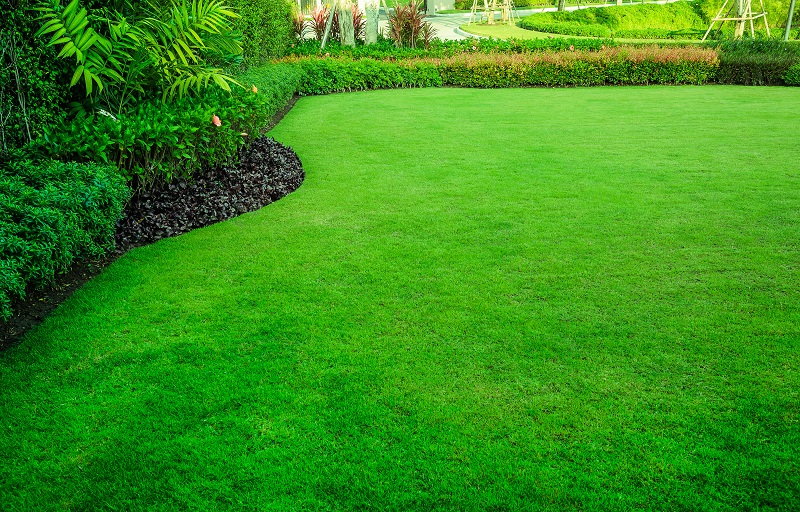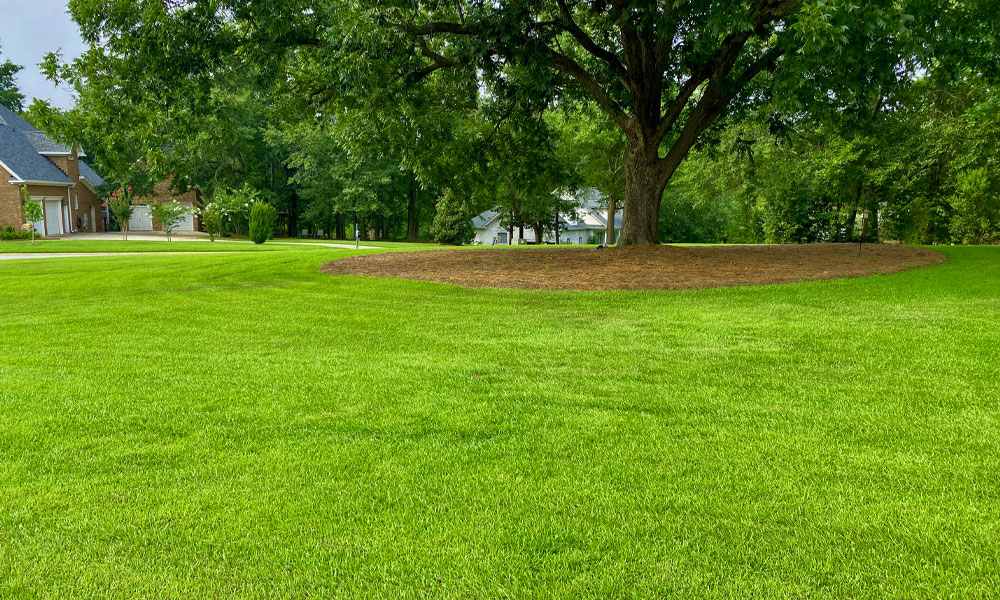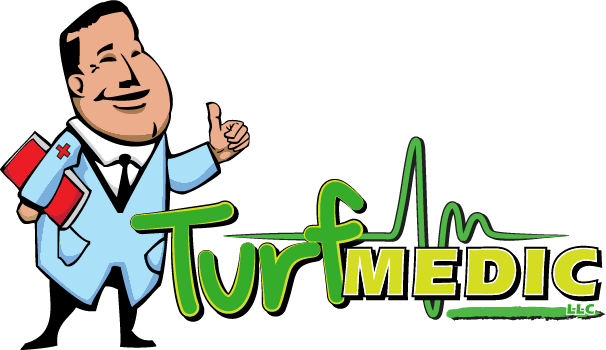We’ve all been there – standing in our driveway, looking at our lawn that’s somehow managed to turn into a patchwork of brown spots and weeds, while the neighbor’s grass looks like something straight out of a magazine. You might be wondering what you’re doing wrong, and more often than not, it comes down to one critical factor: timing.
Here in Greencastle, we see this scenario play out countless times each year. Homeowners spend hundreds of dollars on fertilizers, weed killers, and treatments, only to apply them at the wrong time and watch their money literally go down the drain. Your lawn operates on nature’s schedule, not your weekend availability, and understanding this rhythm is the difference between a lawn that survives and one that truly thrives.
The good news? Once you understand when to treat your lawn throughout the year, everything else starts falling into place. We’re going to walk you through exactly when to apply each treatment for maximum results, specifically tailored to our Pennsylvania climate and growing conditions. By the end of this guide, you’ll have a clear roadmap for timing your lawn treatments like a pro.
Understanding Your Lawn’s Natural Cycle
Your lawn isn’t just sitting there doing nothing – it’s constantly growing, resting, and preparing for the next phase of its cycle. In Greencastle, we’re dealing primarily with cool-season grasses like fescue, bluegrass, and ryegrass, which have two major growth periods: spring and fall. These grasses actually slow down their growth during the hot summer months and go dormant in winter.
Think of your lawn like a marathon runner. Spring is when it wakes up and starts building energy, summer is when it’s conserving strength to survive the heat, fall is when it’s in peak training mode, and winter is recovery time. When you apply treatments during these peak growth periods, your grass can actually absorb and use the nutrients effectively.
Timing your treatments wrong is like trying to fuel up a car that’s already got a full tank – it’s wasteful and can actually cause problems. We’ve seen lawns burned by over-fertilization in summer heat, and we’ve watched homeowners throw away money on pre-emergent herbicides applied too late to prevent weeds that have already sprouted.
Spring Lawn Treatment Timeline (March-May)
Spring in Greencastle typically starts showing signs of life in March, but don’t let those first warm days fool you into rushing out with treatments. Wait for soil temperature, not air temperature – this is the key to spring success. We recommend waiting until soil temperatures consistently reach 55°F before applying your first pre-emergent herbicide, which usually happens in mid to late March around here.
Here’s your optimal spring treatment schedule for Greencastle lawns:
- Mid to Late March: Apply pre-emergent herbicide when soil hits 55°F consistently
- April: First fertilization after you’ve mowed at least twice
- Late April/Early May: Second feeding with balanced, slow-release fertilizer
- May: Spot-treat breakthrough weeds before temperatures reach 80°F regularly
Late spring, around May, is your window for spot-treating any weeds that made it through your pre-emergent barrier and giving your lawn its second feeding of the year. However, be careful not to over-fertilize during this period – once temperatures start climbing into the 80s regularly, it’s time to ease up on the heavy feeding and focus on maintenance mode.
Summer Lawn Care Strategy (June-August)
Summer lawn care in Pennsylvania is all about playing defense rather than offense. The hot, often humid conditions we experience from June through August put stress on cool-season grasses, and this isn’t the time for aggressive treatments or heavy fertilization. Instead, focus on maintaining the health you’ve built up during spring.
If you must fertilize during summer, stick to light applications of slow-release products and only if your lawn is showing clear signs of nutrient deficiency. The bigger focus should be on proper watering practices and maintaining your mowing height – keeping grass a bit longer during summer heat helps protect the root system and maintain soil moisture.
Late summer, particularly August, can be a good time for targeted weed control if you’re dealing with summer annual weeds. However, avoid any major renovations, overseeding, or heavy fertilization during peak heat periods. Your lawn is in survival mode during summer heat – pushing it too hard can cause more harm than good.

Fall: The Golden Season for Lawn Treatments (September-November)
Fall is absolutely the golden season for lawn treatments here in Greencastle, and it’s when we see the most dramatic improvements in lawn health and appearance. As temperatures start cooling down in September, cool-season grasses enter their second major growth period of the year, making this the perfect time for your most important fall fertilization.
Your fall treatment priorities should include:
- September: Heavy fertilization as temperatures cool below 85°F
- September-October: Core aeration and overseeding window
- October/Early November: Winterizer fertilizer application (high potassium)
- Late November: Final pre-emergent application for winter weeds
Don’t forget about your final pre-emergent application in late fall, typically around Thanksgiving time in our area. This application helps prevent winter annual weeds and early spring weeds from getting established. Many homeowners skip this step, but it’s one of the most cost-effective treatments you can apply for next year’s weed prevention.
Winter Preparation and Planning (December-February)
Winter might seem like the off-season for lawn care, but it’s actually an important time for planning and light maintenance. December through February in Greencastle means your lawn is dormant, and this isn’t the time for any fertilization or active treatments. However, it’s the perfect time to plan your next year’s treatment schedule and address any equipment maintenance.
Use winter months to evaluate how your lawn performed during the previous growing season. Take note of areas where weeds were problematic, spots that stayed brown longer than others, or sections that seemed to struggle during summer heat. This information will help you adjust your timing and treatment approach for the coming year.
The only winter “treatment” we recommend is keeping heavy foot traffic and equipment off frozen grass, which can cause damage that won’t show up until spring. It’s also a good time to trim any overhanging branches that might be blocking sunlight from reaching your lawn once growing season starts again.
Local Considerations for Pennsylvania Lawns
Living in Greencastle means dealing with some specific challenges that affect treatment timing. Our clay soils tend to hold moisture longer in spring, which can delay the optimal timing for some treatments. We often recommend waiting an extra week or two compared to timing charts designed for lighter soils, especially for pre-emergent applications.
Key factors that affect timing in our area:
- Clay soils: Delay spring treatments by 1-2 weeks compared to sandy soil recommendations
- Transition zone location: Weather can be unpredictable – stay flexible with scheduling
- High humidity summers: Increases disease risk with heavy fertilization
Greencastle’s clay soils change everything when it comes to timing – this is why generic timing charts often fail local homeowners. The humidity levels we experience during summer also affect how treatments perform. Higher humidity can increase the risk of fungal diseases, especially when combined with heavy fertilization. This is why we emphasize lighter feeding during summer months and focus on cultural practices like proper mowing and watering instead.

Signs Your Timing is Off
Your lawn will tell you when treatments aren’t properly timed, but you need to know what to look for. Yellow or brown streaking after fertilization usually indicates you applied nutrients during stress periods or didn’t water properly afterward. Excessive weed growth despite herbicide applications typically means your timing was off – either too early or too late for the specific weeds you’re targeting.
Watch for these warning signs of poor timing:
- Yellow/brown streaking: Fertilizer applied during stress or without proper watering
- Weeds breaking through: Pre-emergent applied too early or too late
- Short-lived results: Treatments applied when grass can’t utilize them properly
- Poor color response: Wrong fertilizer type or timing for the season
If you notice that your treatments seem to work for a short time but then fade quickly, this often indicates timing problems rather than product problems. Treatments applied during optimal timing windows provide longer-lasting results because the grass can actually absorb and utilize them effectively rather than just receiving a temporary boost.
Professional vs. DIY Treatment Timing
While understanding timing is crucial for any lawn care approach, there’s a significant difference between knowing the theory and executing it perfectly. We use soil temperature monitoring, growth degree day calculations, and years of local experience to fine-tune treatment timing for maximum effectiveness. Professional timing takes into account not just calendar dates, but current weather patterns, soil conditions, and individual lawn characteristics.
Mistimed DIY treatments often cost more than professional service when you factor in wasted products, repeated applications, and potential lawn damage. We’ve seen homeowners spend more money on do-it-yourself attempts than they would have paid for professional service, with significantly worse results. Professional timing also includes proper product selection for current conditions, not just generic timing recommendations.
Professional service also provides consistency that’s difficult to achieve with DIY approaches. We maintain detailed records of what treatments were applied when, allowing us to adjust timing based on how your specific lawn responds. This kind of customized approach simply isn’t possible with generic timing charts and weekend availability scheduling.
Conclusion
The best time to treat your lawn isn’t just about following a calendar – it’s about understanding your grass’s natural rhythms and working with them rather than against them. Here in Greencastle, that means focusing your major efforts during the spring and fall growth periods, playing defense during summer heat, and using winter for planning and preparation. Remember that proper timing multiplies the effectiveness of every treatment you apply. A perfectly timed application of moderate-quality fertilizer will outperform expensive products applied at the wrong time, which is why we emphasize timing as the foundation of all successful lawn care programs.
Professional lawn spraying in Greencastle requires not just quality products, but expert timing based on local soil conditions, weather patterns, and grass types specific to our Pennsylvania climate. If you’re tired of guessing when to treat your lawn and want to see the results that come from professional timing and expertise, we’d love to help. Contact Turf Medic today to discuss a customized treatment schedule that works with your lawn’s natural cycle and delivers the thick, healthy grass you’ve been hoping for.

Recent Comments